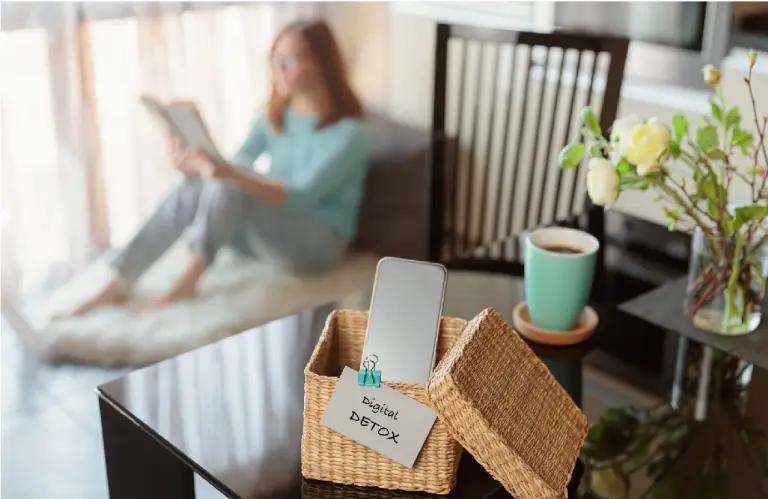

Digital Detox: Balancing Technology Use for a Healthy Work Environment
In an era dominated by technological advancements, the boundaries between work and personal life have become increasingly blurred. The pervasive use of digital devices has undoubtedly transformed the way we work, bringing both efficiency and challenges to the forefront. As we navigate through this digital landscape, it becomes imperative to consider the impact of constant connectivity on our well-being. This article explores the concept of a "Digital Detox" and delves into strategies for achieving a harmonious balance between technology use and a healthy work environment.
The Digital Onslaught:
The integration of technology into our professional lives has transformed work with smartphones, laptops, and digital tools enhancing communication, productivity, and remote collaboration. Yet, the constant influx of emails, notifications, and the pressure to stay connected can lead to burnout, impacting mental health.
Recognizing the Need for Detox:
Identifying signs of digital overload is the first step to a healthier work environment. Increased stress, reduced focus, and feeling constantly “plugged in” indicate it might be time for a digital detox. Understanding the link between well-being and technology empowers us to make informed choices.
Implementing Digital Detox Strategies:
- Establishing Boundaries:
- Set a rule to avoid checking work-related emails and messages after a certain time in the evening.
- Use the “Do Not Disturb” feature on your phone during specific hours to prevent notifications from disturbing your personal time.
- Mindful Technology Consumption:
- Reduce distractions by disabling unnecessary notifications on your devices
- Create folders on your phone’s home screen for essential apps, making it easier to focus on specific tasks without being tempted by other apps.
- Scheduled Breaks:
- Engage in activities that promote relaxation and rejuvenation.
- Set alarms or reminders for short breaks throughout the day to step away from your computer or phone.
- During breaks, engage in activities like stretching exercises, deep breathing, or a quick walk to refresh your mind.
- Offline Activities:
- Plan a “screen-free” evening or weekend day where you intentionally avoid using electronics.
- Join a local club or group that participates in offline activities, such as a book club, hiking group, or art class.
- Keep a physical book by your bedside and commit to reading a few chapters before bedtime.
- Digital-Free Zones:
- Designate a specific area in the office and at home as digital-free zones to encourage face-to-face communication and quality time with the people around you.
- For remote workers, create a dedicated workspace, and once work hours are over, leave that area to signal the end of the workday.
Benefits of a Digital Detox:
Taking a break from constant digital connectivity can have several benefits for both mental and physical well-being. Here are some advantages of incorporating a digital detox into your routine:
- Improved Mental Health:
- Constant exposure to digital devices, social media, and notifications can contribute to increased stress and anxiety levels. It allows individuals to step back, disconnect, and reduce the mental clutter associated with digital life.
- Exposure to screens, particularly before bedtime, can disrupt sleep patterns. Disconnecting from digital devices can promote better sleep quality and help regulate circadian rhythms.
- Enhanced Productivity:
- Continuous notifications and the temptation to check emails or social media can hinder productivity. A digital detox can help individuals focus on tasks without constant interruptions, leading to improved efficiency and concentration.
- Better Rapport
- Spending less time on digital devices allows for more meaningful in-person interactions. Building and maintaining strong personal relationships often require undivided attention and genuine connections.
- Increased Awareness and Mindfulness:
- Constant digital engagement can lead to a sense of being disconnected from the present moment. A digital detox encourages mindfulness, helping individuals appreciate and engage fully in their surroundings.
- Health-Promoting Effects
- Excessive screen time often involves long periods of sitting. A digital detox can encourage physical activity and reduce sedentary behavior, promoting better overall health.
- Balanced Work-Life Integration:
- Continuous connectivity can contribute to burnout. Taking breaks from digital devices allows for better work-life balance and prevents the feeling of being constantly “on call.”
- Personal Growth:
- Stepping away from the constant flow of information can provide space for artistic thinking and self-reflection. This can be conducive to personal growth and the generation of new ideas.
- Improved Digital Habits:
- A digital detox can help individuals become more aware of their digital habits and dependencies. This self-awareness may lead to healthier and more intentional use of technology.
It’s important to note that the benefits of a digital detox may vary from person to person, and the key is to find a balance that works for individual needs and lifestyles. It doesn’t necessarily mean completely avoiding technology but rather adopting a more mindful and intentional approach to its use.
By establishing clear boundaries, practicing mindfulness, and incorporating offline activities, individuals can strike a balance between the benefits of technology and the need for personal well-being. As we navigate the digital landscape, prioritizing self-care and adopting a mindful approach to technology use are essential for a more sustainable and fulfilling work life.
